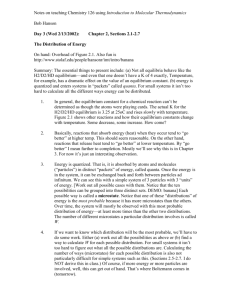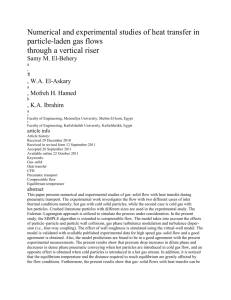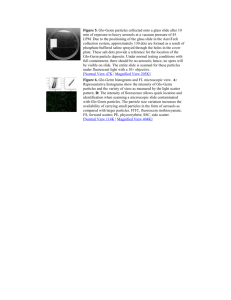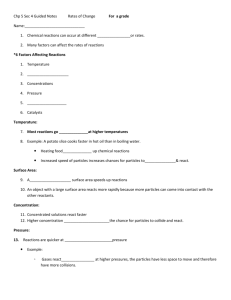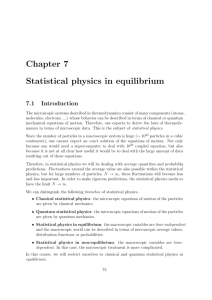Narration
advertisement
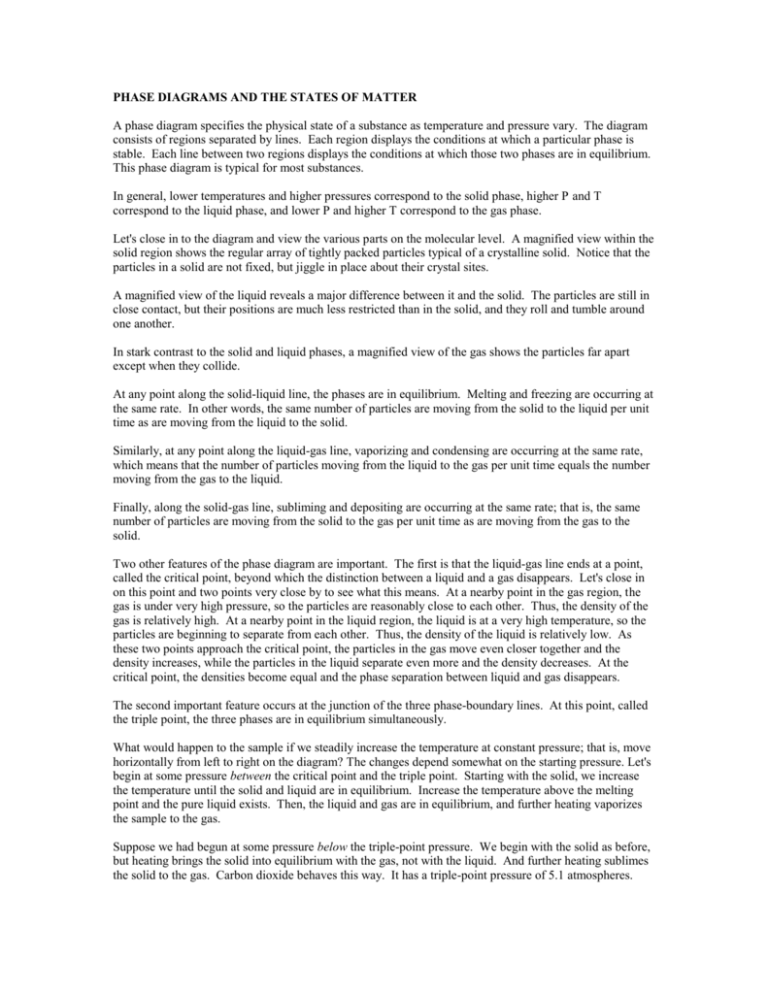
PHASE DIAGRAMS AND THE STATES OF MATTER A phase diagram specifies the physical state of a substance as temperature and pressure vary. The diagram consists of regions separated by lines. Each region displays the conditions at which a particular phase is stable. Each line between two regions displays the conditions at which those two phases are in equilibrium. This phase diagram is typical for most substances. In general, lower temperatures and higher pressures correspond to the solid phase, higher P and T correspond to the liquid phase, and lower P and higher T correspond to the gas phase. Let's close in to the diagram and view the various parts on the molecular level. A magnified view within the solid region shows the regular array of tightly packed particles typical of a crystalline solid. Notice that the particles in a solid are not fixed, but jiggle in place about their crystal sites. A magnified view of the liquid reveals a major difference between it and the solid. The particles are still in close contact, but their positions are much less restricted than in the solid, and they roll and tumble around one another. In stark contrast to the solid and liquid phases, a magnified view of the gas shows the particles far apart except when they collide. At any point along the solid-liquid line, the phases are in equilibrium. Melting and freezing are occurring at the same rate. In other words, the same number of particles are moving from the solid to the liquid per unit time as are moving from the liquid to the solid. Similarly, at any point along the liquid-gas line, vaporizing and condensing are occurring at the same rate, which means that the number of particles moving from the liquid to the gas per unit time equals the number moving from the gas to the liquid. Finally, along the solid-gas line, subliming and depositing are occurring at the same rate; that is, the same number of particles are moving from the solid to the gas per unit time as are moving from the gas to the solid. Two other features of the phase diagram are important. The first is that the liquid-gas line ends at a point, called the critical point, beyond which the distinction between a liquid and a gas disappears. Let's close in on this point and two points very close by to see what this means. At a nearby point in the gas region, the gas is under very high pressure, so the particles are reasonably close to each other. Thus, the density of the gas is relatively high. At a nearby point in the liquid region, the liquid is at a very high temperature, so the particles are beginning to separate from each other. Thus, the density of the liquid is relatively low. As these two points approach the critical point, the particles in the gas move even closer together and the density increases, while the particles in the liquid separate even more and the density decreases. At the critical point, the densities become equal and the phase separation between liquid and gas disappears. The second important feature occurs at the junction of the three phase-boundary lines. At this point, called the triple point, the three phases are in equilibrium simultaneously. What would happen to the sample if we steadily increase the temperature at constant pressure; that is, move horizontally from left to right on the diagram? The changes depend somewhat on the starting pressure. Let's begin at some pressure between the critical point and the triple point. Starting with the solid, we increase the temperature until the solid and liquid are in equilibrium. Increase the temperature above the melting point and the pure liquid exists. Then, the liquid and gas are in equilibrium, and further heating vaporizes the sample to the gas. Suppose we had begun at some pressure below the triple-point pressure. We begin with the solid as before, but heating brings the solid into equilibrium with the gas, not with the liquid. And further heating sublimes the solid to the gas. Carbon dioxide behaves this way. It has a triple-point pressure of 5.1 atmospheres. Warming a piece of dry ice at ordinary room pressures of around one atmosphere changes it directly into the gas. Liquid CO2 is not stable at one atmosphere. Now, let's see the changes the sample undergoes as we decrease the pressure at constant temperature; that is, move down the phase diagram. Here, the starting temperature determines how the sample changes. If we start with the solid at some temperature higher than the triple-point temperature and lower the pressure, we first reach the solid-liquid equilibrium state. Thus, the sample melts due only to a change in pressure. Then the pure liquid exists until a further pressure decrease gives liquid and gas in equilibrium, and finally the pure gas. Notice that if we start at any temperature lower than, to the left of, the triple-point temperature, we move directly from solid to gas. Here is the phase diagram showing all regions, points, and equilibrium processes.
